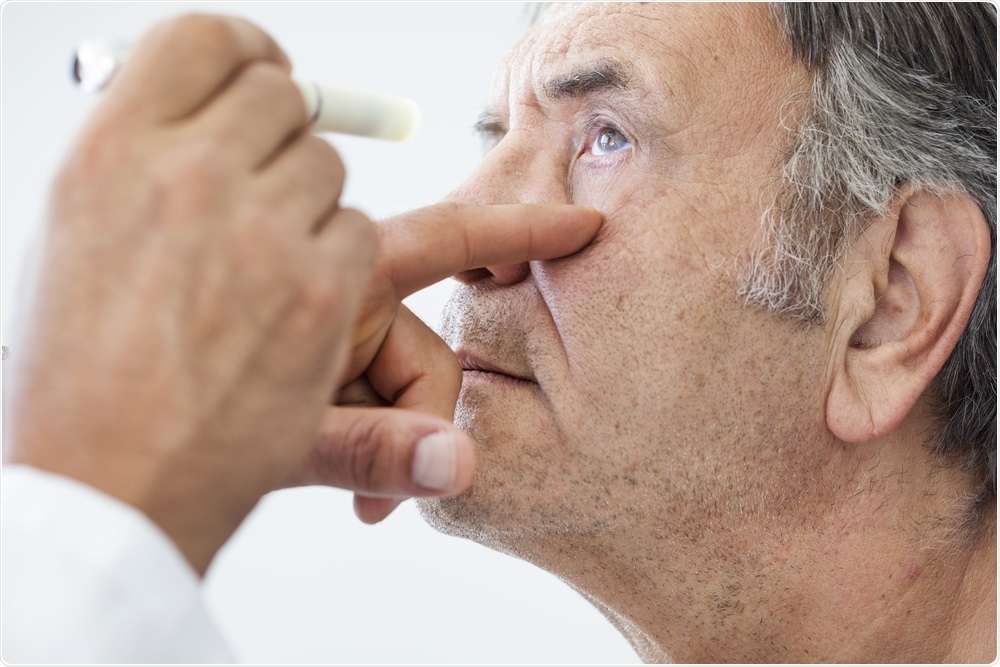Researchers at the University of South Florida (USF) have made a ground-breaking discovery about how pressure is moderated in the eye that may pave the way for advances in the diagnosis and treatment of glaucoma.

Image Credit: Sebra/Shutterstock.com
As recently reported in the Journal of Physiology, the team has identified a novel feedback pathway interconnecting the brain and the eye, regulating eye pressure.
Glaucoma is the second-leading cause of blindness worldwide, yet its pathogenesis is still not fully understood. The condition is associated with increased pressure in the eye or intraocular pressure (IOP) resulting from a reduction in the eye’s ability to drain fluid properly. The subsequent fluid build-up and increased IOP place a mechanical strain on the optic nerve at the point where it exits the eye, leading to vision loss that can eventually cause blindness.
What has puzzled researchers about glaucoma?
However, although IOP is known to contribute to glaucoma and lowering IOP has been shown to slow disease progression, in some cases, the condition progresses in patients with a healthy IOP.
One long-held hypothesis is that pressure around the brain or intracranial pressure (ICP) may also play a role in glaucoma, since the degree of strain placed on the optic nerve depends on both forces either side of it (IOP and ICP) and the pressure difference between the eye and the brain.
Furthermore, the majority of evidence suggests that ICP is reduced in cases of glaucoma, compared with control groups, and that people with a lower ICP are at an increased risk for glaucoma.
USF researchers find that eye and brain pressure is connected
Now, for the first time, neuroscientists have demonstrated that the pressure in the eye and brain are connected physiologically. The USF team reached their conclusion after finding that changing the brain pressure in animal models also changed the eye’s fluid-draining properties. Furthermore, these changes could be stopped by using chemicals that blocked feedback signals from the brain.
The team also noted that the eye’s fluid-clearing ability changed in a way that meant a normal pressure difference was restored across the optic nerve.
The discovery “offers a new target for glaucoma treatment”
The drainage control system may serve to protect the optic nerve from swings in eye or brain pressure. Its discovery offers a new target for glaucoma treatment, wherein the modulatory mechanisms of the system might be exploited to help lower eye pressure and impede disease progression in glaucoma patients."
Chris Passaglia, Department of Medical Engineering.
The current approach to checking for glaucoma
Glaucoma is the leading cause of blindness among individuals aged over 60. Generally, symptoms do not manifest until the condition is at an advanced stage and, in the meantime, ophthalmologists monitor eye pressure during routine exams using an "air puff test.”
However, Passaglia says more complex aspects of the disease present diagnostic challenges; some patients with glaucoma symptoms have healthy eye pressure, while others with unhealthy eye pressure, do not exhibit any symptoms.
What’s next?
Researchers are now trying to find the precise location of the brain cells that send signals to the eye, as well as which nerve fibers in the eye are regulated by the brain.
The team hopes this will help clinicians to improve glaucoma diagnosis, as well as their understanding of how the condition develops and could potentially be treated.
Journal reference:
Baneke et, al,. 2020,The role of intracranial pressure in glaucoma and therapeutic implications, Nature, DOI: https://doi.org/10.1038/s41433-019-0681-y